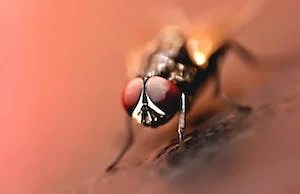The day Isla died
There was a sighting of
A Yellow Cardinal
At an Upper Michigan backyard feeding station.
It made headlines here.
People were amazed
And cited the odds of 1 in a million
Genetic mutation.
Isla had no genetic mutations.
But a quick search shows
The odds of stillbirth
Are about one-half percent;
Higher for Hispanic and Black babies,
Less for Asians,
But about 1 in 200.
After 28 weeks gestation, the odds improve:
Only about 3 in a thousand are lost,
And after the 37th week we call them “term stillbirths.”
They are rarer still.
2.1 per 10,000. (.021%)
Three months ago, Vinnie died,
Also in the 37th week,
Also a term stillbirth,
Also absent genetic mutations.
Another .021% event.
Vinnie was my daughter’s son.
Isla was my son’s daughter.
Both gone before they got here,
In one season.
What are the odds of that in one family?
Roughly we calculate.
.021 times .021
Equals .000441:
About 4 in a million of it ever happening.
I cannot calculate the possibility
Of one family losing both
Within 3 months,
But if the data we use is annually reported,
You can divide that by a quarter of a year.
Now we can find that 1 in a million statistic.
The odds that would happen in one family are incalculable.
The headlines are rarely a couple of stillbirth obituaries
And no one is amazed.
Category Archives: Nature
For Emily
A fly mistook
My ear
For shelter
And it wasn’t even raining.
“Fly in there and die,”
I thought.
Lately I think too much about dying.
And as he tried to back out,
I heard him thunder
While I shouted,
Shook my head
And pounded my ear.
He rested a silent moment,
Then flew out the window
Into the June-blue sky.
[138]

Six Color Bluebird

I got a little ambitious and put together a six color reduction print of a bluebird for my granddaughter. Generally, I am pleased with the bird, but the elderberries he’s standing on are a tangled mess and it’s hard to distinguish between the purple of the berries and the black of the branches. Small spheres are hard! As compensation, I learned a lot about composition and technique. Glad I did it; I should do it again someday and make it better. Edition of 12, approx. 4″ x 4″
[129]
The Parable of the Otter
 The otter floats, playfully aware,
The otter floats, playfully aware,
on the currents and the tides.
She dives to examine
an interesting stone.
She turns it every way
in the sunshine,
floating on her back.
She flips it away
and finds another.
It, too, is interesting,
turned in the air,
maybe for the first time in a thousand years
or, perhaps, since last week.
It smells of the water.
It slips away.
She does not keep the interesting stones.
They would weigh her down.
She would drown in her sleep.
She darts to the bottom.
She pries a fish from a crevice
and returns to the surface current,
always floating on her back,
enjoying her lunch.
Sometimes she spies a clam.
She also finds the right anvil stone and,
again floating on her back in the currents,
beats the clam on the stone
she balances on her stomach.
It is primal and
it is dinner.
She releases the clam shell and the stone.
One plunges to the bottom.
The other rocks back and forth in descent.
Tomorrow:
different stones,
different clams.
